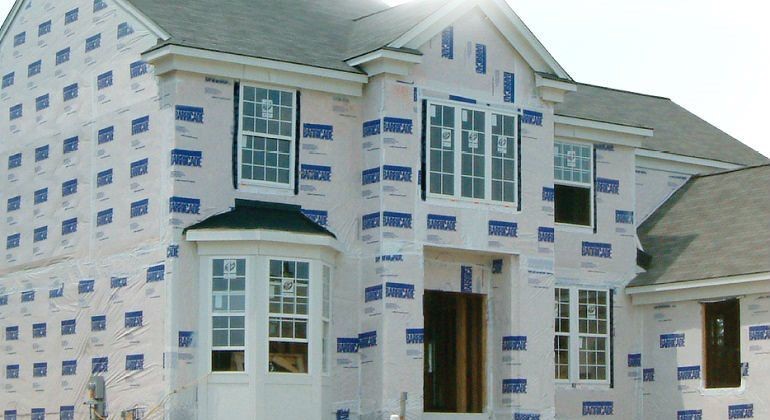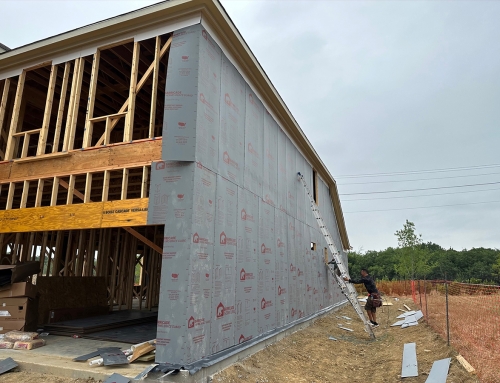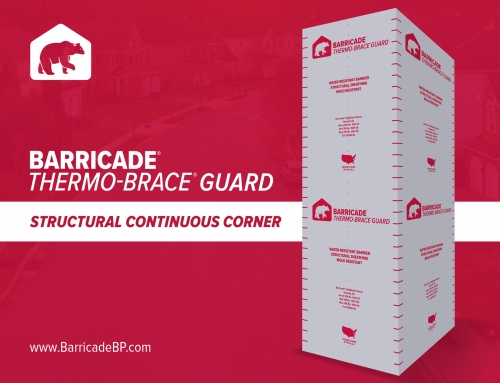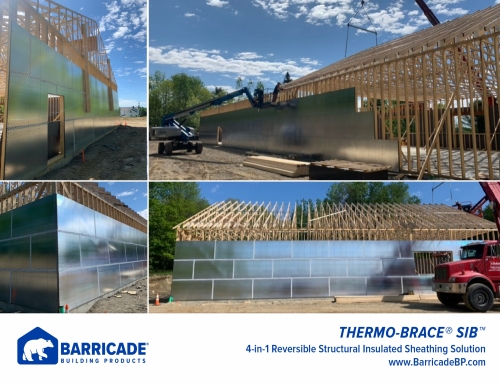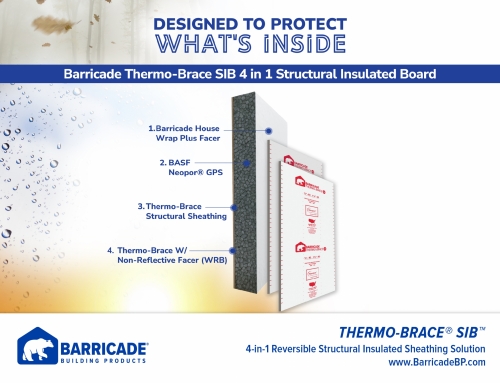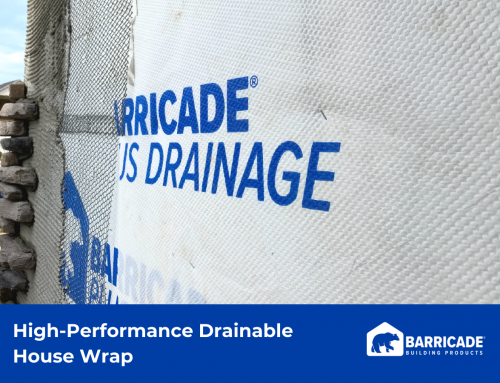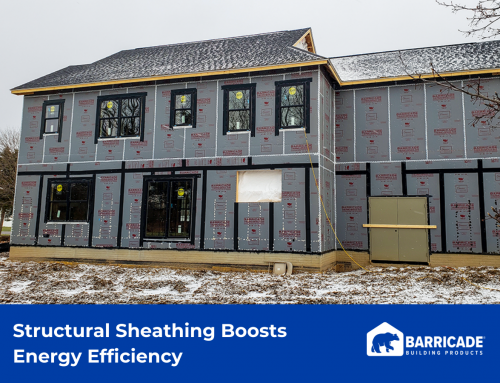In hot and humid climates, it is crucial to control air and moisture intrusion into a home or commercial building’s wall system. Uncontrolled moisture intrusion into a wall system can cause mold, which is unhealthy for the occupants of the home, and wood rot. In hot and humid climates, there are three main ways moisture can accumulate within a wall system.
- Water can intrude a home when rainwater or groundwater leaks through the building’s envelope.
- In warm climates, hot and humid air from the exterior (from wind or the HVAC system) flows towards the cooler interior spaces through gaps and cracks in the building envelope. Once inside, the humid air can condense and form droplets of water on the interior surfaces of the wall system. Humid air infiltration is the largest source of moisture intrusion in hot and humid climates.
- Occupants of a structure generate moisture inside a building or home during daily activities, such as bathing, washing clothes, etc.; however, a properly operating HVAC system can adequately remove this moisture.
In hot and humid climates, a well-designed air and moisture control plan for a new home will save homeowners money on both energy and maintenance. A properly installed air and moisture control system also improves the indoor air quality and the comfort level inside the home. The strategies for managing moisture infiltration must include controlling moisture entry, accumulation, and removal. Three essential components for preventing moisture inflation and accumulation in hot and humid climates are exterior drainage, a vapor-permeable, weather-resistant barrier, and a high-quality HVAC system.
EXTERIOR DRAINAGE COMPONENTS FOR AIR MOISTURE CONTROL IN HOT AND HUMID CLIMATES
Exterior drainage components for the walls, roofs, foundations, windows, doors, and skylights provide some protection from moisture accumulation within a wall system due to rainwater and groundwater. For example, overhangs keep water away from walls, canopies keep water away from windows, and site grading keeps water away from the foundation perimeters. However, cladding systems can still absorb significant amounts of moisture; therefore, the design of wall assemblies must also deal with the inward flow of moisture from rain and groundwater.
VAPOR-PERMEABLE, WEATHER-RESISTANT BARRIER FOR CONTROLLING AIR AND MOISTURE IN HOT AND HUMID CLIMATES
A vapor-permeable, weather-resistant barrier (WRB) is a critical element of a wall system for air and moisture control in hot and humid climates. A WRB shields a building from water and air infiltration. A WRB also lets water escape from the wall system, which protects a building or home from damage and deterioration. High-quality weather-resistant barriers are both air- and moisture-resistant and permeable to vapor. A WRB ensures a home or commercial building is energy-efficient, healthy and comfortable.
CONTROL AIR AND MOISTURE INFILTRATION WITH THE BARRICADE® BUILDING WRAP

Installing Barricade Building Wrap weather-resistant barriers under the siding of a building stops air- and moisture- infiltration, along with moisture accumulation within a wall system. Barricade Building Wraps are high-quality weather-resistant barriers that are air- and moisture-resistant and permeable. They also have high tear strength, are UV-resistant, and simple to install. Importantly, Barricade Building Wrap meets and exceeds the requirements of the IBC 1402.2 and IRC R703.1.1. The high levels of air resistance of Barricade Building Wraps are in accordance with IRC Section N1102.4.1 and IECC Section 402.4 and 502.4.
- Barricade Building Wraps pass all the tests used to measure a house wrap’s water resistance: ASTM D779 (boat test), CCMC 07102 (pond test), and AATCC Test Method 127.
- The five Barricade Building Wraps are permeable to vapor. The ASTM E96 standard requires house wrap with five perms or greater. The higher the number, the more permeable the material.
ALL FIVE OF BARRICADE BUILDING WRAPS ACHIEVE GREATER THAN FIVE PERMS.
| House Wrap | Perm Rating (ASTM E-96A) |
|---|---|
| Barricade Wrap | 11 US Perms |
| Barricade Wrap Plus | 16 US Perms |
| R-Wrap® | 50 US Perms |
HVAC SYSTEM FOR CONTROLLING AIR AND MOISTURE IN HOT AND HUMID CLIMATES
A properly installed heating, ventilation, and air conditioning (HVAC) system can control the moisture levels in the air-conditioned spaces of a building. Without a controlled ventilation system, moisture levels can increase, which can cause condensation on window surfaces and give rise to surface mold and mildew, as well as concealed condensation within walls and roof spaces. A controlled ventilation system is essential to remove excess moisture from the air-conditioned areas of a building or home in hot and humid climates.
Controlling air and moisture intrusion into a home or building’s wall system is essential in hot and humid climates. A well-designed air and moisture control plan takes into account the entry, accumulation, and removal of moisture. Three critical elements of an air and moisture control system are exterior drainage, a vapor-permeable, weather-resistant barrier, and a high-quality ventilation system. Please visit Barricade® Building Wrap for more information on air and moisture control in hot and humid climates.

